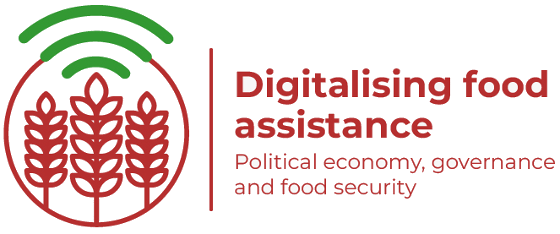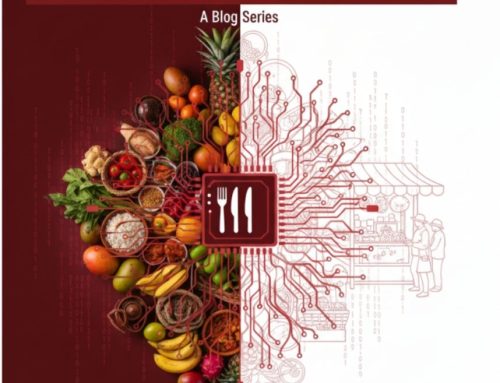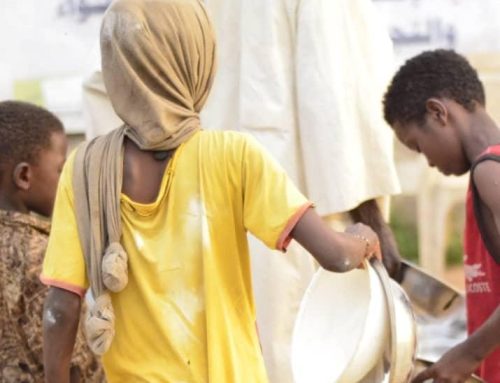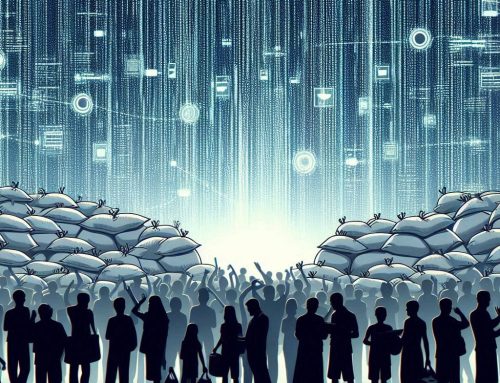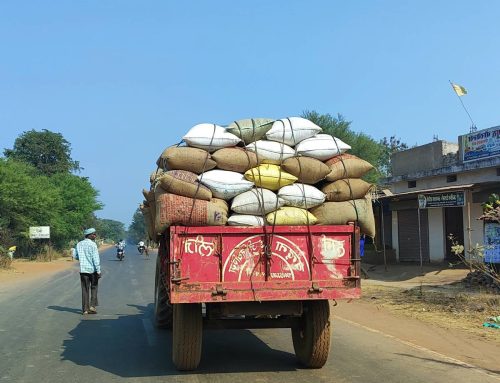Digital Famine: Discussing Risks and Prevention
Authored by: Susanne Jaspars
Originally published on July 5 2022 by PeaceRep
The 2008 financial crisis and the Covid pandemic have dramatically accelerated the use of digital technologies to respond to food insecurity and humanitarian crises. This is because they appear more efficient, faster, and may assist humanitarians reach hard to access populations, but there are also risks of exclusion and surveillance. Digital technologies are also used in war: for example cyber-attacks on critical infrastructure (for food, health and water) and modern war strategies include network disruptions and shutdowns which impact on livelihoods and survival. The communications blackout and starvation risks in Tigray in 2021 are a case in point. Digital technologies are here to stay, and are likely to expand further in the current and worsening global food and fuel crises. This makes it all the more important to consider how they are used, and with what effects.
On 15 June 2022, a group of aid workers and researchers met virtually to discuss the recently published paper: ‘Digital Feast and Famine: Digital technologies and humanitarian law in food security, starvation and famine risk’. For the first time, this innovative paper links the use of digital technologies in war, and in humanitarian response, with international law and famine risk. While the report highlights many issues for further discussion and exploration, key issues that participants focussed on in the meeting were: what’s new in terms of benefits, risks and vulnerabilities to famine; and the choice that people have to opt in or out of digital technologies.
Many people throughout the world now depend on mobile phone and internet-based technologies for their food security, welfare, and survival. They are used to transfer information, to bank, save and transfer money, for identification (digital biometrics in ID cards), as part of livelihoods (including trade and markets) or in humanitarian assistance. As such they can be considered objects indispensable to survival (OIS), protected under international humanitarian law (IHL). According to IHL, it is prohibited to attack, destroy, remove, or render useless OIS, which are usually identified as food, water, shelter, health care, etc. In the 1980s, aid workers and researchers talked about people’s coping strategies, as important for famine prevention, for example collecting wild foods and whether people could access them. Digital technologies add a new dimension, but the principle is the same: they have become essential to survival – and network disruption or restrictions on access poses a risk. In addition, social media has been used to spread misinformation, and in some cases exacerbated conflict, and governments have shut down networks to prevent information coming out, to block aid, or to block ‘enemy’ communications which also affected access to food and other essentials. Digital technologies provide both a means of accessing food and income but also a new vulnerability, which needs to be considered when assessing famine risk.
In terms of the law, it is likely that digital networks as OIS will be determined on a case-by-case basis, although it is not unreasonable to assume that they could be considered as such – in some contexts – in future criminal trials. Famine has local, national and international causes, but network disruptions can provide clear-cut examples of starvation crimes: in Tigray, with a single decision, the government could switch the internet off – which affected social welfare, aid, banks, remittances and ultimately survival.
As one of the participants noted: digital technologies can be both a blessing and a curse. It enables people experiencing crisis to contact relatives for help and to get information on what is happening out quickly. Whether conflict or famine is seen, however, is still political. In Darfur, for example, recent conflict and displacement has drawn little international attention, but is this because no one had mobile phones to call or take pictures and disseminate via social media? A population’s high dependency on digital technology also means that when warring parties disrupt or shutdown networks, it means entire livelihoods can be destroyed, literally, at the flick of a switch. Aid organisations are also increasingly vulnerable to cyberattacks.
More subtle examples of benefits and risks include the use of digital technologies in assessments and surveillance. First, in relation to assessments, famine early warning, and gathering evidence of starvation crimes. In theory, digital technologies facilitate the remote collection of food security information on hard-to-access populations. But – there will be issues of exclusion, for example if no phone or no connection. Much of the information collected will be quantitative, which makes it difficult to understand the complex social and political dynamics of famine causation. At the same time, digital information – for example, satellite imagery – has been used to put together evidence for starvation crimes in Yemen and Tigray. Just as assessments have been manipulated in the past, however, this will also be possible for digital information; awareness is needed about the creation of false digital evidence. As before, a combination of qualitative and quantitative information is desirable (on the ground human rights monitors often complements digital evidence of starvation crimes). Qualitative information is needed to better understand causation, generally, and in the case of ‘digital famine’ who is controlling the shutdowns and how people are dealing with it. The more quantitative information we collect, the less we talk to people, and less ‘human’ our response becomes.
Finally, and coming back to the issue of choice, is the surveillance enabled by digital technologies. Digital technologies – for example digital identity documents and mobile cash transfers – create the possibility for states to monitor and control populations. At its most basic, movement and expenditure is tracked. However, these technologies can also be used to create ‘customer’ profiles, which can be used to include or exclude people with certain characteristics, for political or economic reasons. This applies to national governments as well as donors – and a number of participants pointed out that donors are increasingly asking humanitarian organisations to gather information on beneficiaries for counter-terrorism purposes. Key issues about the protection of civilian data, and who to hold accountable for breaches of privacy remain unresolved. This is why a number of participants highlighted the need for choice in whether to receive aid digitally or not, and in whether to be ‘seen’ (or the subject of surveillance). Sometimes people have good reason for not wanting to reveal themselves – to be connected, in some way, is to be governed. Aid workers and others concerned with protecting civilians in conflict need to think more about the right to disconnect or to switch off, as well as the right to be connected.
Overall, the group agreed on the need for further exploration of all the issues raised, including in particular further empirical evidence on the effect of shutdowns and disinformation on livelihoods, famine and starvation, and how this is (or should be) addressed in international law, as well as on issues of data protection, surveillance and the potential for increasing inequality.
